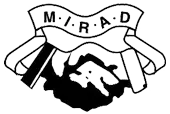A Reg Number Plate Odyssey The Netherlands Updates Its System Again
Reg Plates ArticleA Reg Number Plate Odyssey The Netherlands Updates Its System Again

The Netherlands, a nation known for its innovative spirit and cycling prowess, has embarked on another chapter in its reg number plate saga. On June 5th, 2024, the RDW, the country's vehicle licensing agency, rolled out the 11th iteration of its national license plate system, marking a shift in the way Dutch vehicles will be identified. This change, implemented after just five years, reflects the ever-growing number of cars on Dutch roads and the need for an adaptable system.
A Historical Perspective: From Simplicity to Complexity
The story of Dutch reg number plates stretches back to 1951, when the nation implemented its first standardized system. Back then, things were refreshingly simple. The plates featured a single letter followed by four digits. This format served the country well for a solid 16 years. However, as car ownership climbed steadily, the need for a more expansive system became apparent.
Subsequent iterations saw the introduction of more letters and digits, culminating in the 2019 configuration. This system employed a single letter, three numbers, and concluded with two letters, separated by hyphens. While this offered a wider range of combinations, it reached its capacity quicker than anticipated due to the relentless rise in vehicle registrations.
The New Landscape: The Three-Two-One Format
The latest iteration, implemented in June 2024, ushers in the "three-two-one" format. The new plates begin with a sequence of three letters, followed by two numbers, and conclude with a single, final letter. All elements are separated by hyphens for improved readability. The very first plate issued under this system bore the inscription GBB-01-B, marking a historic moment for Dutch motorists.
There's a hidden benefit embedded within this seemingly simple change. Unlike some countries where license plates directly reveal a car's age, the Netherlands employs a more subtle approach. The order of letters and numbers provides a rough indication of a vehicle's vintage. This means that by glancing at a plate, you can make an educated guess about how recently the car rolled off the production line.
Addressing Practicalities: Lost Plates and the RDW
The new system also incorporates a small but significant detail – a number positioned above the first hyphen. This seemingly insignificant addition serves a crucial purpose. It signifies that the reg number plate has been replaced, typically due to loss, theft, or severe damage. This allows authorities to quickly identify non-original plates, potentially aiding in investigations and preventing misuse.
The RDW plays a central role in overseeing the reg number plate system. As the agency responsible for vehicle registration, they shoulder the responsibility of issuing new plates, maintaining records, and ensuring compliance. The increasing frequency of format changes underscores the challenges they face in keeping pace with the ever-expanding Dutch automotive landscape.
Beyond the Numbers: A Cultural Icon
License plates, often seen as mundane necessities, hold a deeper significance in Dutch culture. They serve as a form of identification for vehicles, but also spark conversation and even a touch of national pride. The new format is bound to generate discussions among motorists, with some perhaps even attempting to decipher the hidden age indicator within the letter and number sequences.
The Dutch penchant for cycling also influences the reg number plate narrative. While car ownership continues to rise, bicycles remain a dominant mode of transportation in the Netherlands. This unique aspect might lead to questions about whether the license plate system caters equally to both cars and bicycles, or if the focus remains primarily on automobiles.
Looking Ahead: A System in Flux
The future of Dutch license plates remains an open question. The "three-two-one" format, while offering a broader range of combinations, may not be the ultimate solution. As car ownership continues its upward trajectory, the RDW might need to explore even more elaborate configurations in the years to come.
One potential avenue could involve incorporating additional digits or letters. Alternatively, the authorities might consider a complete overhaul, implementing a system entirely different from the current format. Regardless of the path chosen, the Dutch license plate saga serves as a fascinating case study, highlighting the need for adaptability in a world where car ownership shows no signs of slowing down.
It all started back in 1991 when our love and obsession for private number plates was born.
Since then we have grown steadily over the years to become a leading light in the private number plate industry holding our own stock of high quality number plates and many thousands of registrations we are selling for trade and private clients including many celebrities and sports personalities.


- FREE TRANSFER SERVICE - your paperwork is handled by our trained team
- OVER 30 YEARS EXPERTISE - long established and trusted company
- DVLA RECOGNISED RESELLER - linked directly from the DVLA website
- TRADE ASSOCIATION MEMBERS - MIRAD and CN Guild members


